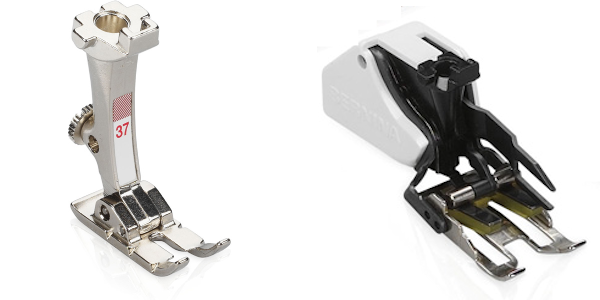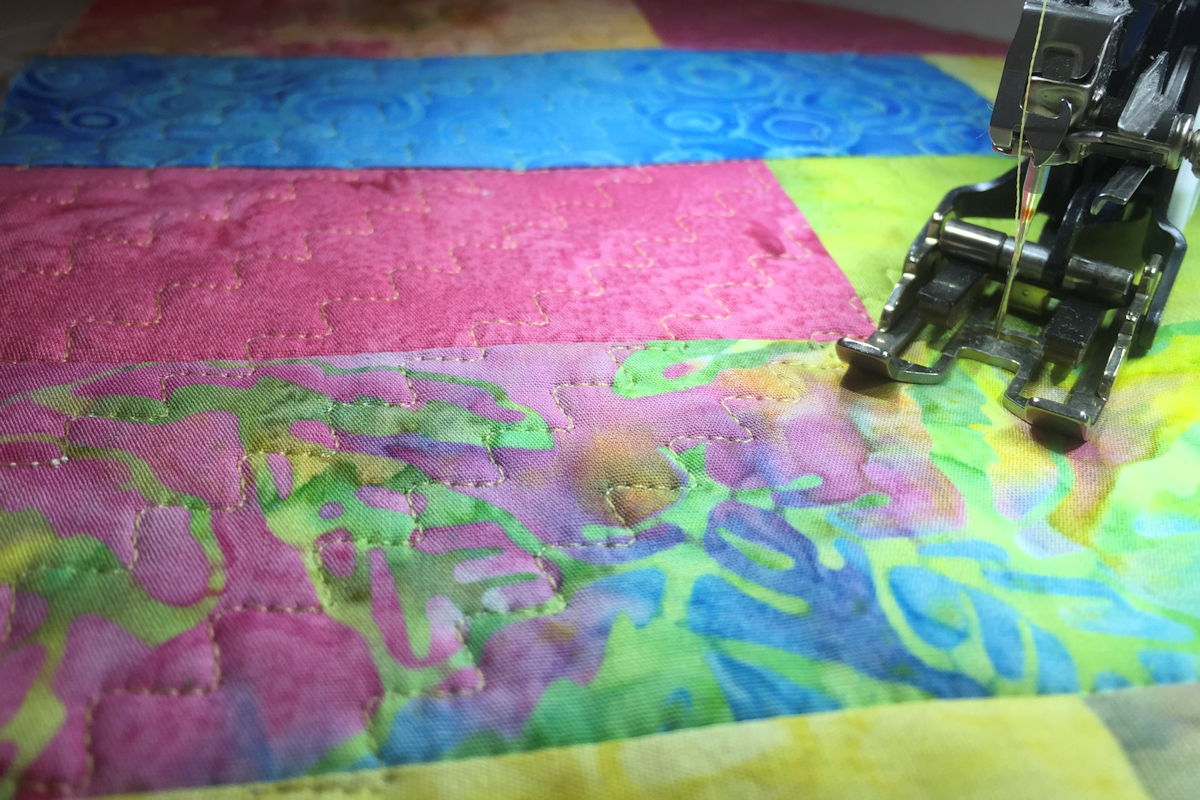Modern quilts have a unique look when compared with more traditional styles. They have clean lines and simple motifs. Both the piecing and the quilting are simple but have high impact. This post is going to feature one block that fits the description of modern quilting. This is my practice block for a larger quilt that I have on my to-do list.
Materials for One 10” Modern Quilt Block
Fabric: Select several coordinating prints with varying values and contrast. You’ll need five strips, 2½” x 6¼” and five strips, 2½” x 4¼”. This block works great for pre-cut strips!
12” square of batting (will be trimmed later)
Thread for piecing and quilting – I use a 40-weight thread for piecing and a 100-weight thread for quilting (more about that later)
Temporary spray adhesive
Presser Feet
Quarter inch Foot – The strips will be pieced with ¼” seams. Just place the edge of the foot on the edge of the fabric and you will have consistent 1/4″ seams. Very important when trying to match pieces to form a pattern.
Walking Foot – The walking foot will keep the layers from shifting as you quilt. It acts like a second set of feed teeth on top of the fabric, pinching the layers together and moving them all at the same speed.

Planning and Piecing
Lay out the strips to decide how you want to arrange them. One short piece will be stitched to one long piece to make five vertical strips, which will be stitched together. When you have decided on the arrangement, attach your quarter inch foot to the machine stitch one longer strips to one shorter one. Do this five times to make five 10 1/2″ strips. Next, alternate the direction of the strips (short piece at the top next to one that has the short piece at the bottom). Stitch them together to complete a 10 1/2” block. Then stitched into a quilt top, the finished size of the block will be 10″
Quilting
Place batting behind the pieced block, using temporary spray adhesive to hold them together. Attach the walking foot to your machine. Thread the machine with your selected thread. I use 100 weight thread, which is very fine. This places less emphasis on the look of the thread and more on the indentations of the stitching, giving it a more textured look. Select the running stitch (sometimes called a serpentine stitch). Adjust the stitch length and width to your liking. Stitch parallel lines of stitching across the block, using the edge of the foot for spacing. I stitched mine diagonally across the block but vertically or horizontally works too.

Trim the batting to be the same size as the block. The finished blocks is on my design wall so I can decide if I like it or not. I already know that I do but I think I will pick fabrics with a little more contrast when I make the quilt!
Join the Sewfeet Community!
Click here to sign up for our newsletter and join the Sewfeet Community! Once a month, I’ll send you sewing tips and let you know about new blog posts so you can keep up with all the fun things I want to share with you. Thanks for stopping by and I’ll “see” you soon!


